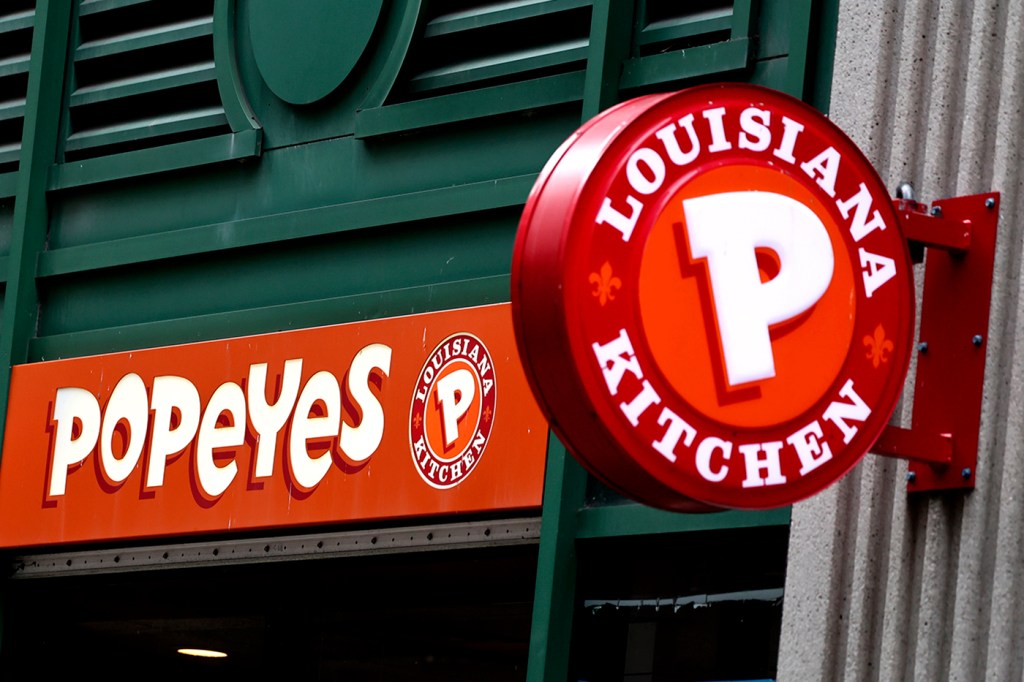From Wendy’s to Popeyes and Five Guys, experts explain why US fast food chains are making a comeback in the UK
Courtney Hagen-Ford, an assistant professor in marketing at Northeastern University in London, says social media has broadened the appeal of U.S. brands.

LONDON — With each announcement of a new Wendy’s restaurant in the U.K. comes a melee of social media pleas for more.
“Come to Yorkshire.”
“Been waiting for years for some locations.”
“Ipswich?”
It seems Britain just cannot get enough of the taste of those square burgers and Frosty drinks as Wendy’s looks to take another crack at the U.K. market.
The burger chain set up shops in the 1980s, but exited before the turn of the century due to high property and operating costs, according to The Guardian. But, after returning in 2021 following a 20-year absence, Wendy’s now has more than 40 locations in the country.
It is far from the only U.S. fast-food chain looking to make inroads in Britain. Taco Bell also dipped its toe into the water in the ’80s and ’90s, but found the market was not ripe enough. Today, it has 120-plus restaurants.
Customers also line up around the block for fried chicken from newly opened Popeyes, while the likes of WingStop and Shake Shack are all trying their luck.
Courtney Hagen-Ford, an assistant professor in marketing at Northeastern University in London, says social media has broadened the appeal of U.S. brands.
“It makes reaching these concealed consumers faster and easier than ever before,” she says. “If you target correctly, you’re nudging the right eyeballs.”
The consumer behavior expert says Wendy’s deployed a strategy in the U.S. of using comedy on social media — what she terms “sass-mouthing” — meaning many online-savvy youngsters in Britain were likely to have heard of the brand despite having left the U.K. before they were even born.
“That is the sort of thing that can and will go viral, and geographic boundaries don’t play so much of a part in that,” she says. “If you’re socially engaged in social media — and many young people are these days — it is very likely that somebody in the millennial demographic would have come across Wendy’s sass-mouthing.
“They’re making jokes, they’re talking with other brands, they are interacting with people they made a joke about. There is that utterly, beautifully clear brand identity with how they set their socials and how they run it. You know exactly who they are, you know what they’re going to be — there’s no ambiguity.”
Brands with a unique selling point
Brands with a unique selling point (USP) are also more likely to be able to entice first-time customers to try their products, says Hagen-Ford.
One of the first major chains to demonstrate that the U.K. burger market could be cracked by more than just McDonald’s and Burger King was Five Guys. The Virginia-based firm opened its first British restaurant in 2013 in Covent Garden, London, and now has a roster of 175 stores.
Hagen-Ford says: “What makes Five Guys successful is they have a very clear USP in what they’re offering. It is expensive, but where else can you put an infinite number of toppings on your burger?
“Even just going with customizability at the forefront is quite unique within the U.K. fast-food landscape. And not just customizing, but like: ‘Cheese, bacon, anything — chuck it all on, as much as you, go wild.’ No one else does that. It has a clear identity and a USP.”
There are a whole host of chicken shops in Britain but what helps create a buzz around Popeyes is the offering of “biscuits and gravy,” Hagen-Ford says. Biscuits in the U.K. are what Americans would call cookies, while the southern “biscuit” is more akin to a plain scone in Britain.
But Hagen-Ford says successful brands will have to create a “reason to return” beyond the novelty factors and free giveaways that have helped to draw in custom.
“Biscuits and gravy is the kind of food that a British person, presumably if they haven’t been to the American South, has heard about but doesn’t really know, so that could get people in the door. Whether they come back again is up to Popeyes,” Hagen-Ford says.
“Popeyes has to give them a reason to return. They had a reason to go through the door — ‘Hey, I’ll try biscuits and gravy.’ But are you going to come back again? Popeyes has to convince you.”
n
Pandemic altered customers’ attitudes
Sabina Crowe, head of economics at Northeastern’s London campus, says the pandemic has altered the attitude consumers have to ordering takeout.
“During the pandemic, people turned to Deliveroo and UberEats because it made it so easy to get the food delivered and you couldn’t get out of your house to buy the food,” the food economist says.
“People just got used to having this convenience and now a lot of the fast food is bought, not in person, but ordered via these apps and consumed at home.”
Another draw, says Crowe, is the price, especially with the public becoming more cost-conscious during a global rise in fuel prices after COVID-19 and the Russia-Ukraine war.
“Especially now with the cost of living crisis, people are less likely to go to a sit-down restaurant where it is more expensive and you have a service charge,” the associate professor says.
“Instead, you just order from KFC, McDonald’s or Popeyes.”
An aspect of takeout culture that has allowed U.S. brands to gain a foothold is the rise of so-called “dark kitchens” (also known as “cloud” or “ghost” kitchens). Often hidden away from the high street, these warehouse-like buildings are home to a host of industrial kitchens available for takeaways to set up in. Staff then make a brand’s signature food, which is sold only via delivery apps.
The likes of Popeyes and Five Guys have been known to attempt to expand their offer by using “dark kitchens.” Crowe agrees that the development of such openings is changing the landscape for big chains wanting to test the waters.
“If there’s not that big a financial impact on the company,” she says, “then it makes a lot of sense for them to test a particular location or test a particular market and see if it might be worth opening a permanent store in that urban location.”
Featured Posts
Fast food is a growing market
Fast food is a growing market both globally and in the U.K. According to Fortune Business Insights, the market is predicted to increase by at least 50% between 2021-28. In the U.K., the fast food and takeout industry was worth £22 billion ($29 billion) last year. In 2024, it is expected to grow by £400 million ($529 million), according to Statistica.
And it is not just U.S. restaurants that are getting in on the act. Homegrown chains are also making waves. Greggs, a bakery established in the North East of England, has almost 2,500 locations in the U.K. and recently overtook McDonald’s as Britain’s most popular takeout breakfast.
Crowe points out that the industry’s growth comes with a side order of public health implications.
A slice of pepperoni pizza from Greggs contains a third of the amount of calories the National Health Service (NHS) recommends an adult should consume a day. There are restrictions in England on how close in proximity new takeaways and chicken shops can be to schools but The Times reported that KFC had been able to convince planning inspectors in 24 cases to overturn or waterdown such restrictions.
“Obviously eating these calorie-dense foods that are not very full of nutrients is going to lead to an increase in obesity rates in the U.K. for sure, and children are at high risk as well,” Crowe says.
“And with the rise in obesity, we’re going to have an increase in obesity-associated diseases — we’re going to have diabetes, heart disease, high cholesterol, arthritis. This is going to result in a huge cost increase for the NHS, clearly.”
But once those habits of enjoying fast food are formed, particularly at a young age, it can be hard to break that association, Crowe argues.
“If you’re used to going to McDonald’s every Monday, or Five Guys, Popeyes or wherever, you just do that over and over again,” she says.
“You think, ‘Well, if that worked for me in the past, then why not? It’s a good option and it is going to work for me again in the future.’ It is really difficult to break these habits once they’re formed, so that’s why it is very important not to let kids and teenagers get used to eating these really unhealthy foods.”












